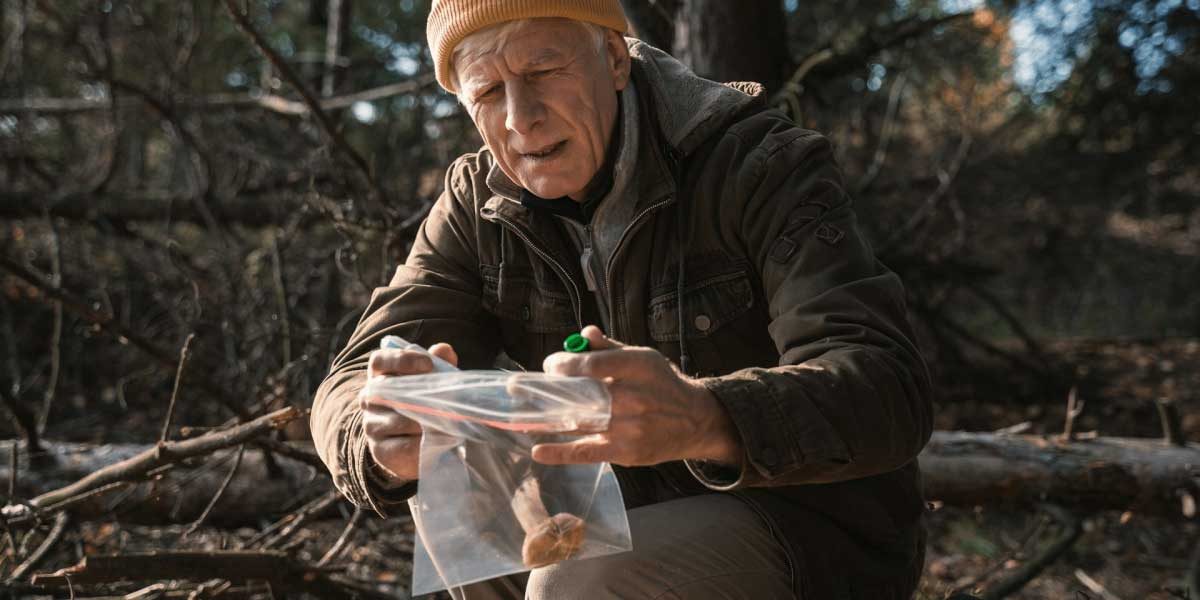Mushrooms are fascinating organisms that play a crucial role in ecosystems around the world. While many species of mushrooms are harmless or even beneficial, there are also numerous species that are toxic and can cause serious illness or even death if ingested. For this reason, knowing how to identify edible mushrooms while hiking is of utmost importance. In this article, we delve into the significance of being able to distinguish between edible and poisonous mushrooms while exploring the great outdoors.
Understanding the Risks of Mushroom Foraging
Mushroom foraging, the practice of collecting wild mushrooms for food, is a popular activity for outdoor enthusiasts and culinary enthusiasts alike. However, it is not without its risks. Many species of mushrooms contain toxins that can cause symptoms ranging from gastrointestinal distress to organ failure and death. Even experienced foragers can sometimes misidentify mushrooms, leading to potentially dangerous consequences. Therefore, it is essential to exercise caution and proper knowledge when foraging for mushrooms in the wild.
Identifying Edible Mushrooms
Identifying edible mushrooms requires a combination of knowledge, experience, and careful observation. It is essential to familiarize oneself with the characteristics of different mushroom species, including their shape, color, texture, smell, and habitat. Additionally, learning to recognize key identifying features, such as gills, pores, spines, and stalks, can help differentiate between edible and poisonous mushrooms. Consulting field guides, attending workshops, and learning from experienced foragers can further enhance one’s ability to identify edible mushrooms accurately.
The Dangers of Poisonous Mushrooms
Consuming poisonous mushrooms can have severe and potentially life-threatening consequences. Many toxic mushrooms contain compounds that can cause gastrointestinal symptoms, such as nausea, vomiting, diarrhea, and abdominal pain. In more severe cases, ingestion of poisonous mushrooms can lead to organ damage, seizures, coma, and death. Children, pets, and individuals with underlying health conditions are particularly vulnerable to the effects of mushroom poisoning. Therefore, it is essential to err on the side of caution and avoid consuming any wild mushrooms unless you are certain of their safety.
Benefits of Knowing Edible Mushrooms
Knowing how to identify edible mushrooms while hiking offers several benefits beyond mere safety. Foraging for wild mushrooms can be a rewarding and enriching experience, connecting individuals with nature and fostering a deeper appreciation for the natural world. Edible mushrooms are also a valuable source of nutrition, providing essential vitamins, minerals, and antioxidants. By learning to identify and harvest edible mushrooms responsibly, hikers can supplement their diet with nutritious and delicious wild foods while exploring the great outdoors.
Responsible Foraging Practices
When foraging for wild mushrooms, it is essential to practice responsible and sustainable harvesting techniques. Only collect mushrooms that you can positively identify as safe and edible, leaving behind any specimens that you are unsure about. Use a sharp knife to cut mushrooms at the base of the stem, leaving the mycelium and surrounding habitat intact. Avoid overharvesting and respect local regulations and guidelines regarding mushroom foraging. By practicing responsible foraging, hikers can minimize their impact on fragile ecosystems and ensure the continued availability of wild mushrooms for future generations.
Enhancing Awareness and Education
In addition to practicing responsible foraging, enhancing awareness and education about wild mushrooms is essential for promoting safety and sustainability. Organize workshops, seminars, and educational events to teach others about the identification, ecology, and culinary uses of edible mushrooms. Encourage collaboration and knowledge-sharing within the foraging community, and leverage online resources and social media platforms to disseminate information and foster a culture of responsible foraging. By raising awareness and promoting education, we can empower hikers and outdoor enthusiasts to make informed decisions and safely enjoy the wonders of wild mushrooms.
Takeaway
Knowing how to identify edible mushrooms while hiking is a skill that every outdoor enthusiast should possess. Not only does it help mitigate the risks of mushroom poisoning, but it also opens up opportunities for culinary exploration, nutritional supplementation, and a deeper connection with nature. By familiarizing oneself with the characteristics of edible mushrooms, exercising caution and proper judgment, practicing responsible foraging techniques, and enhancing awareness and education within the foraging community, hikers can safely enjoy the bounty of wild mushrooms while exploring the great outdoors.
















